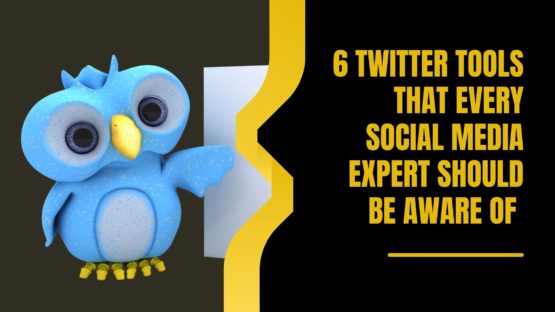Did you know that your social media marketing is governed by certain principles and the Rule of Third is just one of them?
When I first heard of the term Rule of Third in social media marketing, my first instinct was, “is it related to using pictures of social media adverts?”
Social media marketing has certain fundamental rules that govern how a content is written to engage people. This is called the Rule of Third. We will learn a bit of what it actually means and how does it work. Does it have to do with the golden points? Which are the golden points in that case?
We are also going to compare it with another social media marketing rule, called the 80/20 Rule and discuss which is better than the other. Let’s first begin with the Rule of Third.
The Rule of Third in Social Media Marketing: What is it?
Think of your content marketing strategy in terms of three grids. The Rule of Third divides the content into three basic principles – Promotion, Personal, Sharing.
- Promotion: 1/3 of the content should concentrate on promoting products and sharing deals that will benefit the customers. The purpose of a promotional content is to draw the audience to your website and then drive them to conversion.
- Personal: 1/3 of the concentrate on sharing ideas and stories from thought leaders of like-minded businesses and industry.
- Curation: 1/3 of the content should be curated from other sources. Suppose if you are a movie critic and recently you wrote a movie review. There are two ways you can share this on the social media platform.
First, you simply share it with any other post. If you are quite a renowned reviewer, then your target audience will click on the blog post immediately and read the content.
The other way is to content curation where you cross promote other writers as well along with your posts. You post a movie review written by some other contemporary critic that you know fans will enjoy. The good point is that it turns your platform as a trusted source for all information that fans can check out whenever a new movie is released. You also increase traffic engagement, which also leads to increase in social shares.
The third rule is also a good strategy when trying to engage the new target audience. You expose yourself to fans of other writers. Who knows! Maybe there is a good chance that your audience base will increase. But now let’s compare it with the 80/20 Rule to see the difference.
The 80//20 Rule
According to the 80/20 Rule, 80 percent of the content should be educational while the rest 20 percent should be promotional.
- The 80 Rule: This should be relevant to the industry but at the same time educational and interesting. Some of the samples of an 80 Rule includes – instructions, latest news, valuable insights, and introductions to new perspectives.
It should consist something valuable coming from reputable influencers, sites, and competitors.
- The 20 Rule: This percentage of content should be promotional. You can boast about your service, link your blogs, emails, PPC ads back to your website, or even offer discounts.
Sharing valuable contents or information with others can help you to grow up as a reputable source of information that people begin to rely on. However, if you don’t hyperlink them to any relevant sites then how will you drive as many traffic as you have imagined?
But Why 80/20?
The 80/20 Rule was derived from the Pareto Principle, where Vilfredo Pareto observes that most of the things in life are unevenly distributed. This could be power distribution, wealth, etc.
The 80/20 Rule is also a good balancing act that teaches you not to promote yourself first. If you keep doing that then it can turn people away. That’s because people are more interested in genuine information. So try limiting your promotion strategy while trying to provide with valuable content is a sweet spot. Python Core Developers from Ukraine
Rule of Third vs 80/20 Rule: Which is better
Proponents may vary when it comes to deciding which rule is better than the other. However, most of it depends on your audience.
When it comes to the social media, I think the Rule of Third works the best. The 80/20 Rule, on the contrary, might not. That is because, in social media, you cannot take much time to interact with your audience. News spreads faster in social media.
So you need to be more interactive and open when you are using the social media to promote your business. The Rule of Third is the best when it comes to brand promotion in the social media.
But the Rule of Third will not be the same for every social media channel
That is because every social media platform has an individual USP of interaction. Facebook, for example, is more emotional compared to Twitter. While Facebook encourages a longer and more personal sharing, Twitter favors short and to the crisp points of engagement.
Twitter also uses hashtags (#) and profile symbols like (@) that look weird on Facebook. They also have a limited character count of 140, which are not the kind of tweets that people would want to follow on Facebook.
The fact that Facebook is comparatively more interactive than any other platform gives you a better chance to be open and casual with your customers and prospects. You definitely cannot think of being casual when you are promoting on other social media platforms like LinkedIn or Twitter. If you want to promote one content on all the platforms, make sure that you have it tailored according to the audience taste.
Even if you are implementing the Rule of Third in your social media promotion, it is necessary that the contents are tailored accordingly so that your fans are able to see the relevance of a message no matter which platform they dwell in.
Conclusion
The Rule of Third will only help you maintain the balance you need in your message to achieve the desired result. However, the strategy needs to be implemented in such a way that it continuously illustrates your company’s values and ethos in the most reliable way possible.
Image Courtesy: Pixabay.com




